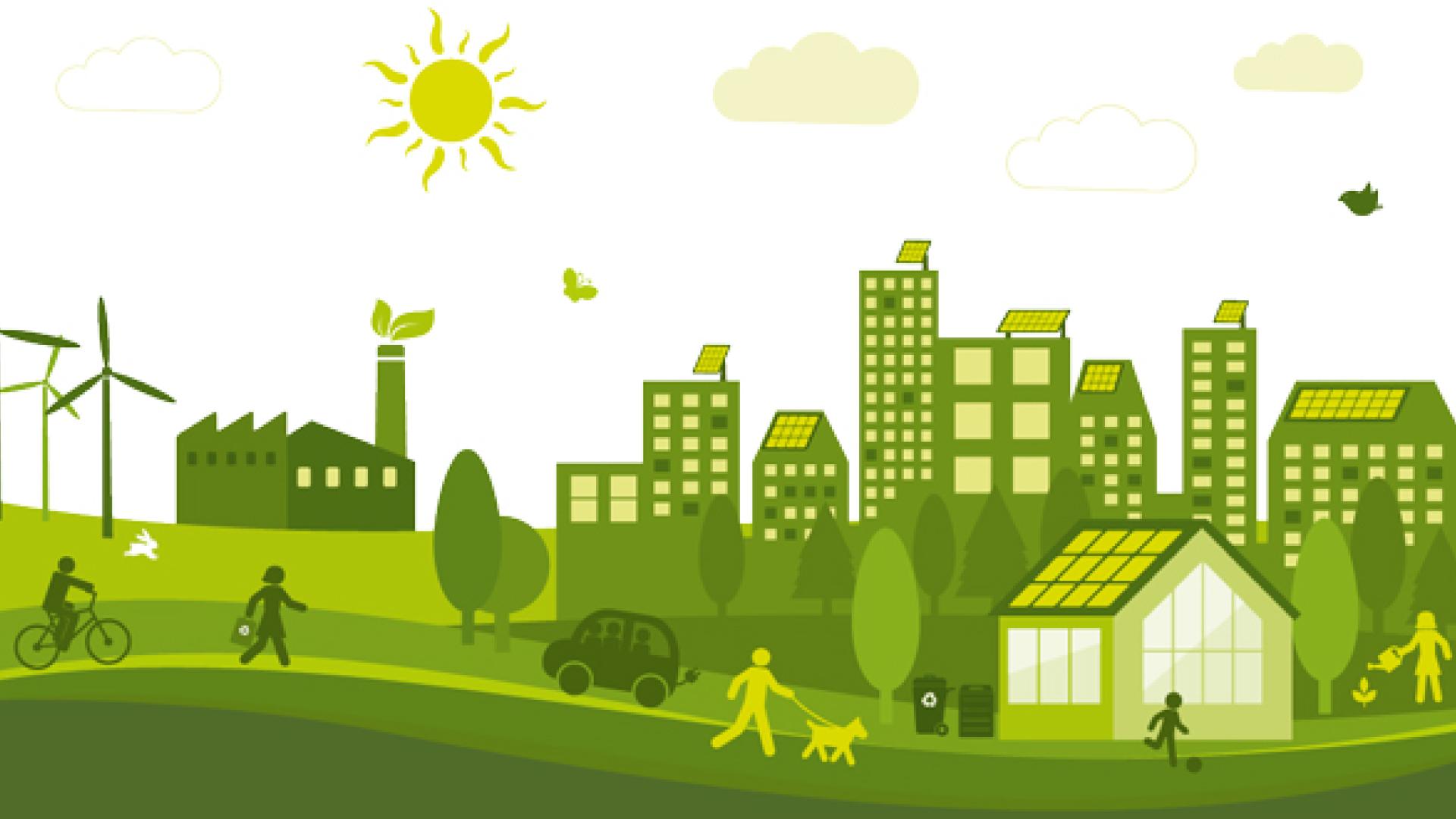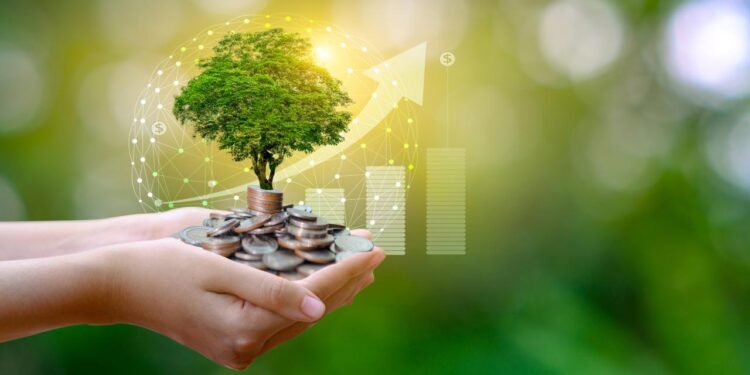In an era defined by accelerating climate change and dwindling natural resources, the concept of the Green Economy has transcended mere environmental idealism to become a pragmatic pathway to sustainable prosperity. This isn’t just about protecting the planet; it’s about fostering innovation, creating jobs, and driving economic growth that respects ecological boundaries. Understanding its multifaceted nature, the drivers behind its rise, and the transformative impact it wields is crucial for businesses, policymakers, and individuals alike. This comprehensive exploration delves into the core tenets of the green economy, charting its trajectory and illuminating the vast opportunities it presents for a resilient and equitable future.
The Essence of the Green Economy

At its heart, the green economy is an economic model that strives for sustainable development without degrading the environment. It’s a system where economic growth is decoupled from resource depletion and pollution. The United Nations Environment Programme (UNEP) broadly defines it as “one that results in improved human well-being and social equity, while significantly reducing environmental risks and ecological scarcities.”
This definition underscores several key characteristics:
A. Resource Efficiency: Minimizing the use of raw materials, water, and energy in production and consumption processes. This includes adopting circular economy principles where waste is minimized, and resources are kept in use for as long as possible.
B. Low Carbon Emissions: Shifting away from fossil fuels towards renewable energy sources and implementing strategies to reduce greenhouse gas emissions across all sectors. This is critical for mitigating climate change impacts.
C. Social Inclusivity: Ensuring that the transition to a green economy benefits all segments of society, creating decent work, reducing poverty, and promoting social equity. It’s not just about environmental benefits, but also about a just transition for workers and communities.
D. Biodiversity Preservation: Protecting and restoring ecosystems, recognizing that healthy ecosystems provide essential services like clean air and water, pollination, and climate regulation, which are fundamental to economic stability.
E. Sustainable Governance: Implementing robust policies, regulations, and financial mechanisms that support green investments, internalize environmental costs, and incentivize sustainable practices. This requires strong institutional frameworks and international cooperation.
Unlike “greenwashing,” which often involves superficial environmental claims without genuine systemic change, the green economy demands fundamental shifts in how we produce, consume, and value resources. It’s a holistic transformation rather than a mere branding exercise.
The Imperative for Change
The urgency to transition to a green economy is driven by a confluence of escalating global crises:
A. Climate Change: The undeniable reality of rising global temperatures, extreme weather events, sea-level rise, and ocean acidification poses existential threats to human societies and natural systems. The economic costs of inaction far outweigh the investments needed for mitigation and adaptation. Businesses face increased supply chain disruptions, operational risks, and regulatory pressures related to carbon emissions.
B. Resource Scarcity: Finite resources such as fossil fuels, minerals, and fresh water are being consumed at unsustainable rates, leading to price volatility, geopolitical tensions, and supply chain vulnerabilities. A green economy seeks to reduce dependence on virgin materials through recycling, reuse, and renewable alternatives.
C. Biodiversity Loss: The rapid decline in species diversity and ecosystem health undermines the natural capital that underpins all economic activity. Ecosystem services, often unpriced in traditional economic models, are vital for agriculture, clean water, and climate stability. Their degradation carries immense economic consequences.
D. Pollution and Health Impacts: Air, water, and soil pollution continue to exact a heavy toll on public health, leading to increased healthcare costs, reduced productivity, and diminished quality of life. The green economy aims to minimize pollutants through cleaner production methods and waste management.
E. Growing Social Inequality: While not solely an environmental issue, the burdens of environmental degradation often fall disproportionately on vulnerable communities. A just transition within the green economy aims to address these inequities, ensuring that new opportunities are accessible to all.
These interconnected challenges highlight the unsustainability of a business-as-usual approach. The green economy offers a framework for navigating these crises, transforming risks into opportunities for innovation and sustainable growth.
Key Pillars of the Green Economy
The transition to a green economy is predicated on fundamental shifts across various sectors. Several key pillars stand out:
A. Renewable Energy Transition: This is arguably the most visible and critical component. It involves phasing out fossil fuels and rapidly scaling up sources like solar, wind, hydro, geothermal, and biomass. Investment in smart grids, energy storage solutions, and distributed generation is also vital. This shift not only reduces emissions but also enhances energy security and creates new industries and jobs. The declining costs of renewables have made them economically competitive, fueling unprecedented investment.
B. Sustainable Transportation: Decarbonizing the transport sector involves promoting electric vehicles (EVs), developing robust public transportation systems, encouraging cycling and walking, and investing in sustainable aviation and shipping fuels. Smart city planning that reduces the need for extensive travel also plays a significant role. The rise of EV charging infrastructure and battery technology is a testament to this transformative pillar.
C. Green Buildings and Infrastructure: Designing, constructing, and renovating buildings to be energy-efficient, use sustainable materials, and incorporate renewable energy sources is crucial. This extends to resilient infrastructure that can withstand climate impacts and minimize environmental footprints. Green building certifications and standards are driving innovation in this sector.
D. Sustainable Agriculture and Land Use: Moving towards practices that conserve soil health, reduce water use, minimize pesticide/fertilizer runoff, and promote biodiversity is essential. This includes organic farming, agroforestry, precision agriculture, and sustainable forestry management. Reducing food waste and shifting dietary patterns also contribute to this pillar.
E. Circular Economy Principles: This pillar fundamentally challenges the linear “take-make-dispose” model. It emphasizes reducing consumption, reusing products, repairing broken items, and recycling materials to keep resources in use for as long as possible. This minimizes waste, reduces demand for virgin resources, and creates new business models in repair, remanufacturing, and recycling.
F. Water Management and Conservation: Efficient water use in agriculture, industry, and households, along with protecting freshwater ecosystems, is paramount. Technologies for water purification, desalination (where appropriate), and smart water grids are key innovations.
G. Waste Management and Resource Recovery: Beyond recycling, this involves waste reduction strategies, composting organic waste, and generating energy from waste where other options are not viable. Innovations in waste-to-energy and materials recovery facilities are critical.
H. Eco-tourism and Sustainable Services: Developing tourism models that minimize environmental impact and support local communities, along with service industries that prioritize sustainability in their operations.
Each of these pillars represents a vast market opportunity and a critical area for innovation and investment.
Economic Opportunities and Benefits

The shift to a green economy is not merely an environmental imperative; it’s a powerful engine for economic growth and diversification. The benefits are multifaceted:
A. Job Creation: Investments in renewable energy, energy efficiency, green infrastructure, and sustainable agriculture create millions of “green jobs” across various skill levels. These include jobs in manufacturing, installation, maintenance, research and development, and various service sectors.
B. Innovation and Competitiveness: The necessity to solve environmental challenges spurs innovation, leading to the development of new technologies, products, and services. Companies that embrace sustainability often gain a competitive edge, attracting environmentally conscious consumers and investors.
C. Energy Security and Price Stability: Reducing reliance on volatile fossil fuel markets by diversifying energy sources improves national energy security and helps stabilize energy prices for businesses and consumers.
D. Resource Security and Efficiency: Implementing circular economy principles reduces dependence on finite virgin resources, mitigating supply chain risks and improving operational efficiency through waste reduction.
E. Improved Public Health: Cleaner air and water, reduced exposure to pollutants, and healthier ecosystems lead to significant improvements in public health, reducing healthcare costs and increasing productivity.
F. New Market Opportunities: The growing demand for sustainable products and services opens up entirely new markets and business models, from eco-friendly consumer goods to environmental consulting and green finance.
G. Increased Investment and Capital Flow: A growing pool of “green finance” from impact investors, development banks, and traditional financial institutions is channeling capital towards sustainable projects and companies. Green bonds and sustainability-linked loans are becoming mainstream.
H. Reduced Economic Volatility: Economies that are less dependent on finite, volatile resources and more resilient to climate impacts tend to exhibit greater long-term stability.
I. Enhanced Brand Reputation: Companies committed to sustainability often enjoy enhanced brand reputation, attracting talent, customers, and investors who value corporate social responsibility.
These benefits demonstrate that the green economy is not a burden but an opportunity to build more resilient, inclusive, and prosperous societies.
Challenges and Enabling Factors
Despite the compelling benefits, the transition to a green economy faces significant hurdles that require concerted effort from all stakeholders:
A. Policy and Regulatory Frameworks: Inconsistent or absent policies, subsidies for fossil fuels, and lack of clear regulatory signals can hinder green investments. Strong, predctable, and long-term policy frameworks are essential to de-risk investments and incentivize sustainable practices. Carbon pricing, renewable energy mandates, and green building codes are examples of effective policies.
B. Financing and Investment: While green finance is growing, the scale of investment needed to fully transition is immense. Overcoming perceived risks of new green technologies, developing innovative financial instruments, and redirecting traditional finance towards green projects are crucial. Blended finance, public-private partnerships, and green bonds play a vital role.
C. Technology Adoption and Scalability: While many green technologies exist, their widespread adoption and scalability can be challenging due to high upfront costs, lack of infrastructure, or insufficient public awareness. Research and development, along with pilot projects, are essential.
D. Skills Gaps and Workforce Transition: The shift to a green economy requires new skills and can displace workers in traditional industries. Investing in education, vocational training, and reskilling programs is vital to ensure a just transition and to build a workforce capable of supporting green industries.
E. Behavioral Change: Shifting consumer behavior towards sustainable consumption patterns and encouraging businesses to adopt greener practices requires awareness campaigns, incentives, and robust public engagement.
F. International Cooperation: Many environmental challenges are global in nature, requiring coordinated international efforts, technology transfer, and financial support for developing countries.
G. Resistance from Incumbent Industries: Established industries with vested interests in the traditional economy may resist change, necessitating careful policy design and stakeholder engagement.
H. Data and Measurement: Robust data collection and transparent reporting mechanisms are needed to track progress, measure impact, and ensure accountability in the green transition.
Addressing these challenges requires a concerted, multi-stakeholder approach involving governments, businesses, civil society, and individuals.
The Role of Technology and Innovation
Technology is a fundamental enabler of the green economy. Rapid advancements are making sustainable solutions more efficient, affordable, and scalable:
A. Artificial Intelligence (AI) and Machine Learning (ML): Optimizing energy grids, predicting renewable energy output, managing waste efficiently, and improving agricultural yields. AI can also help in climate modeling and risk assessment.
B. Internet of Things (IoT): Smart sensors and interconnected devices enable real-time monitoring and management of energy consumption in buildings, water usage in agriculture, and supply chain efficiency.
C. Blockchain Technology: Enhancing transparency and traceability in supply chains (e.g., verifying sustainable sourcing), facilitating carbon credit trading, and enabling decentralized energy markets.
D. Advanced Materials: Development of lighter, stronger, and more sustainable materials for various industries, including bioplastics, self-healing materials, and more efficient solar cells.
E. Biotechnology: Creating sustainable alternatives for fuels, chemicals, and materials; enhancing crop resilience; and developing new methods for pollution remediation.
F. Nanotechnology: Improving efficiency in solar panels, batteries, and water purification systems.
G. Digital Twins and Simulation: Creating virtual models of physical systems (e.g., smart cities, factories) to optimize resource use and test green solutions before physical implementation.
These technologies are not just tools; they are catalysts for systemic change, enabling unprecedented levels of efficiency, intelligence, and sustainability across economic sectors.
Measuring Progress
Traditional economic indicators like Gross Domestic Product (GDP) were not designed to account for environmental degradation or social well-being. To accurately gauge progress in the green economy, new metrics are emerging:
A. Green GDP: An adjusted GDP that subtracts the estimated costs of environmental degradation and resource depletion.
B. Sustainable Development Goals (SDGs): The UN’s 17 interconnected goals provide a comprehensive framework for measuring progress across social, economic, and environmental dimensions.
C. Environmental Performance Indices (EPIs): Ranking countries based on their environmental health and ecosystem vitality.
D. Circular Economy Metrics: Measuring resource efficiency, waste reduction, and the extent of material looping within economic systems.
E. Social Progress Indicators: Metrics that assess human well-being, equity, and access to essential services, complementing purely economic measures.
F. Natural Capital Accounting: Valuing and integrating the services provided by natural ecosystems into economic decision-making.
Moving beyond purely economic growth figures to a more holistic understanding of progress is vital for guiding policies and investments towards a genuinely sustainable future.
Conclusion
The Green Economy is more than a concept; it’s a dynamic and evolving paradigm that offers a compelling vision for a future where economic prosperity and environmental stewardship are mutually reinforcing. It’s a testament to human ingenuity and our capacity to innovate and adapt in the face of daunting global challenges. From renewable energy and sustainable agriculture to circular economy models and green finance, every facet of this transition presents immense opportunities for businesses, governments, and individuals.
While significant challenges remain, the accelerating pace of technological innovation, the growing public awareness of environmental issues, and the increasing commitment from both the public and private sectors suggest that the green economy is not merely an aspiration but an achievable reality. By embracing its principles, fostering collaborative action, and making strategic investments, we can unlock unprecedented prosperity, create a healthier planet, and build societies that are truly resilient, equitable, and sustainable for generations to come. The future is green, and the time to build it is now.









